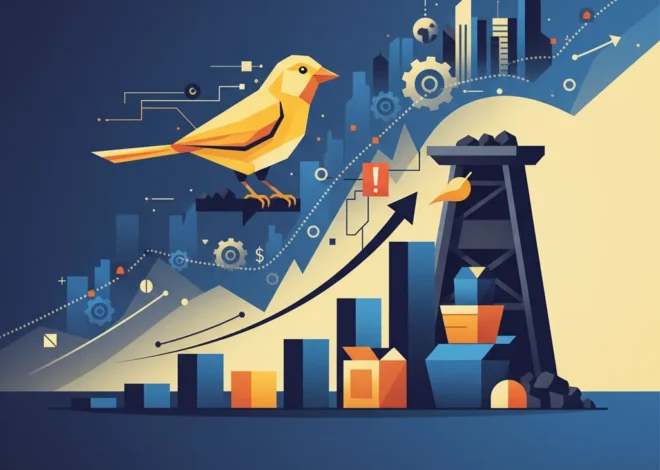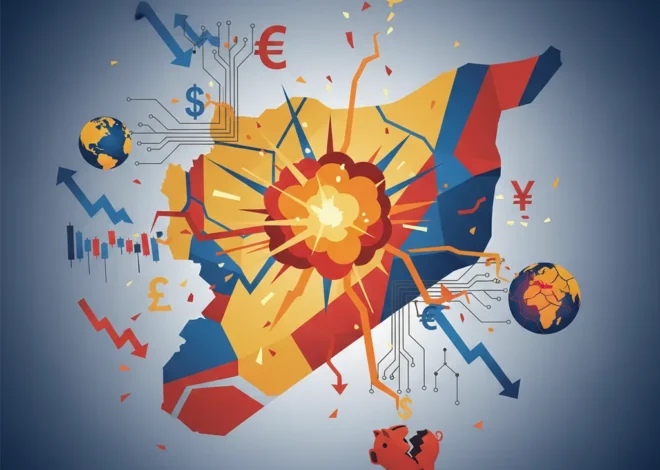
Chipotle’s Burrito Blues: Why a Fast-Food Giant’s Warning Is a Red Flag for the Entire Economy
In the world of investing, sometimes the most profound economic indicators don’t come from the Federal Reserve or the Bureau of Labor Statistics. They come from a foil-wrapped burrito. When Chipotle Mexican Grill (NYSE: CMG), a titan of the fast-casual dining scene, announced it was lowering its sales forecast for the third time this year, the reaction in the stock market was swift and brutal. The company’s shares plummeted more than 15% in after-hours trading, wiping out billions in market value in a matter of minutes.
On the surface, this is a story about one company’s struggles. But to dismiss it as such would be a mistake. Chipotle’s predicament is a canary in the coal mine, a potent signal about the health of the American consumer and, by extension, the broader U.S. economy. When households begin to think twice about a $12 burrito bowl, it’s a sign that discretionary spending is being squeezed from all sides. This single earnings pre-announcement offers a masterclass in modern economics, consumer behavior, and the challenges facing businesses in a high-inflation environment.
Let’s unwrap the layers of this story to understand what’s really happening, why it matters to everyone from Wall Street traders to Main Street families, and what it signals for the future of consumer-facing industries.
The Anatomy of a Stock Market Shockwave
For those new to the world of finance, a company’s “sales guidance” or “forecast” is its educated guess about how much revenue it expects to generate in a future period. Wall Street analysts build their financial models and stock price targets based on this guidance. When a company lowers its guidance, it’s like a ship’s captain suddenly announcing they expect to hit stormy weather ahead. It forces everyone to re-evaluate the journey.
Chipotle’s decision to slash its forecast for the third time in a single year is particularly alarming. It suggests that the business environment is deteriorating faster than even the company’s own seasoned executives anticipated. The immediate market reaction—a 15% after-hours plunge—underscores the gravity of this news. After-hours trading sessions often have lower volume, which can exaggerate price swings, but such a dramatic drop reflects a fundamental reassessment of the company’s growth story by investors.
The core issue cited was simple: consumers are curtailing their dining-out habits. This isn’t just about choosing a competitor; it’s about choosing to eat at home. This shift in behavior is a direct consequence of the macroeconomic pressures that have been building for months.
The £2.1 Billion Breach: How the Jaguar Land Rover Hack Rewrote the Rules of Financial Risk
The Squeezed Consumer: A Barometer for the Economy
Chipotle’s success was built on occupying a sweet spot: a higher-quality, “fast-casual” alternative to traditional fast food that was still relatively affordable. For years, consumers were willing to pay a premium for its “Food with Integrity” promise. But that value proposition is now being tested by a relentless pincer movement of economic forces.
First, persistent inflation has eroded the purchasing power of households. According to the U.S. Bureau of Labor Statistics, while overall inflation has cooled, the cost of food away from home remains stubbornly high. Consumers are seeing their grocery bills and their restaurant tabs climb simultaneously, forcing difficult choices. The luxury of a convenient, professionally prepared lunch is one of the first things to go when budgets tighten.
Second, rising interest rates, orchestrated by the Federal Reserve to combat inflation, are making everything from mortgages to credit card debt more expensive. This leaves less disposable income for non-essential spending. A recent report from the Federal Reserve showed a significant increase in consumer credit, indicating that many are relying on debt to maintain their lifestyles—an unsustainable trend that eventually leads to spending pullbacks.
This is where Chipotle’s problem becomes a macroeconomic indicator. As a “premium” but accessible brand, it serves as a sensitive gauge of consumer sentiment. When this segment of the market falters, it signals that financial stress is moving up the income ladder, affecting not just lower-income households but also the middle class.
A Sector Under Pressure: Beyond the Burrito
Chipotle is not an island. The entire restaurant industry is navigating this challenging landscape. The key question for investors is how different segments are faring. Below is a conceptual look at how various dining segments are being impacted by the current economic climate.
A Snapshot of the Restaurant Sector’s Economic Headwinds
| Restaurant Segment | Primary Consumer | Key Challenge | Potential Outlook |
|---|---|---|---|
| Quick Service (e.g., McDonald’s, Taco Bell) | Value-conscious consumers | Maintaining low price points amidst rising food/labor costs. | May benefit from “trade-down” effect as consumers leave fast-casual. |
| Fast-Casual (e.g., Chipotle, Panera) | Middle-income, health-conscious | Squeezed from both sides: losing customers to cheaper options and home cooking. | Most vulnerable to discretionary spending cuts. Price elasticity is key. |
| Casual Dining (e.g., Olive Garden, Applebee’s) | Families, middle-income groups | High operational costs (staff, real estate) and competition from delivery. | Struggling to justify the price premium over faster, cheaper options. |
| Fine Dining | High-income consumers | Less sensitive to inflation but vulnerable to a major economic downturn or recession. | Relatively resilient for now, but a stock market correction could impact sentiment. |
This table illustrates the “great consumer trade-down” in action. As wallets get lighter, people don’t necessarily stop eating out entirely; they shift their spending to where they perceive the most value. This could mean a short-term boon for traditional fast-food giants who have mastered the art of the value menu. For premium-priced players like Chipotle, it’s a moment of reckoning that demands a focus on operational efficiency, marketing, and reinforcing their value proposition.
The Fintech and Data-Driven Response
In this high-stakes environment, the role of financial technology becomes more critical than ever. Modern restaurant chains are, in many ways, tech companies that happen to sell food. Chipotle’s mobile app and loyalty program are not just convenience tools; they are powerful data-gathering engines.
Every digital order, every scan of a loyalty card, provides a treasure trove of information on consumer behavior. By leveraging this data, Chipotle can:
- Optimize Pricing: Test price sensitivity on specific items or in different geographic markets with surgical precision.
- Personalize Marketing: Target customers who haven’t visited in a while with specific promotions to lure them back.
- Streamline Operations: Use demand forecasting to manage inventory and staffing, reducing waste and controlling costs.
The efficiency of the underlying banking and payments infrastructure also plays a role. As sales volumes fluctuate, managing transaction fees and optimizing cash flow becomes paramount. Looking further ahead, one could even imagine future applications of technologies like blockchain to enhance supply chain transparency—a core tenet of Chipotle’s brand—allowing customers to trace the journey of their ingredients from farm to fork, thereby reinforcing the premium quality they’re paying for.
What This Means for Investors and Business Leaders
The key takeaway from Chipotle’s lowered guidance is a call for vigilance. For those involved in investing and finance, this is a clear signal that Wall Street’s growth expectations for many consumer discretionary companies may be too optimistic.
It’s a reminder to look beyond the headline numbers and dig into the underlying health of the consumer. A stock that looks great on a spreadsheet can be quickly derailed by a shift in public sentiment and spending habits. For business leaders, Chipotle’s experience is a case study in the importance of price elasticity and maintaining a strong value proposition. In a downturn, brands that are perceived as an affordable luxury are often the most vulnerable.
Ultimately, the story of a struggling burrito chain is a microcosm of the entire economy. It demonstrates the intricate dance between corporate strategy, consumer psychology, and macroeconomic policy. As we head into the uncertain months ahead, the checkout line at Chipotle may be one of the most honest and accurate economic surveys you can find.
A Turning Tide? Unpacking the UK's Surprise Inflation Drop and What It Means for the Economy
The path forward for Chipotle and its peers will be challenging. It will require a delicate balance of cost control, strategic pricing, and innovative marketing to convince cash-strapped consumers that their product is not just a want, but a need. How they navigate this period will not only determine their own stock performance but will also provide valuable clues about the resilience of the American consumer and the trajectory of the market as a whole.


